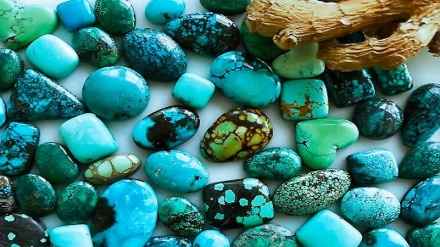Iranian Market (21)
Welcome to another episode of the Iranian Market. In this episode, we will continue discussing the energy issue with an exclusive focus on oil.
As you know, the Islamic Republic of Iran has more than one hundred and fifty billion barrels of oil which includes about 10% of the entire proved reservoir of oil in the world. Thus, the Islamic Republic ranks fourth in the world regarding the possession of oil reservoir.
As a propellant in most of economic activities, energy has an especial status in growth and development. The pace of economic and industrial development in different countries is highly related to the level of energy consumption. The global energy basket shows the fact that despite efforts made for diversifying this basket, oil and gas are still the most important suppliers of energy in the world. ExxonMobil Company in its 2017 energy report stated that by 2040, oil would still remain the most important supplier of energy in the world with 32% of total energy reservoirs. Oil is a strategic commodity that makes industrial capacities more active or creates new capacities and industries as well as playing a pivotal role in development.
According to British Petroleum report, the world oil reservoir in the end of 2016 was more than one trillion and 700 billion barrels. About half of the world proved oil reservoir is in West Asia. This report also indicates that the Islamic Republic of Iran has more than one hundred and fifty billion barrels of oil which includes about 10% of the whole proved oil reservoir in the world. Also, the Islamic Republic ranks fourth in the world regarding the possession of oil reservoir. Having 120 oil fields and 50 gas fields, the Islamic Republic of Iran has an especial status in the world.
About 70% of Iran’s crude oil reservoir are onshore and the rest are mostly offshore and located in the Persian Gulf. The Islamic Republic also possesses proved oil reserves in the Caspian Sea.
Using oil in the world dates back to ancient times. Historical accounts and archeological discoveries show that the civilized ethnicities of ancient times, living in Mesopotamia more than four thousand years ago, were familiar with some of oil products including tar. The people in those times used tar as an impenetrable material. The Romans and the Greek also used tar for insulating ships as well as for making heat and light.
In Iran, during the Achaemenid era oil was used for medical purposes. Herodotus, the Greek historian in his writings has talked about the exploration of oil and tar by Iranians.
The first oil exploration well was drilled in France in 1745. Also the first oil extraction well was drilled in Pennsylvania, the US in 1859.
The start of exploration and extraction of oil well in West Asia dated back to early 20th century which began with oil exploration in the southwestern Iranian city of Masjed Soleiman.
We should actually recognize the exploration of oil in well number one of Masjed Soleiman, producing 500 barrels of oil per day in 1911, as an opening to oil industry in Iran. Before the discovery of oil in Masjed Soleiman, the operation of oil exploration continued in other parts of Khuzestan province. Following this operation, the oil fields of Haftgol, Aghajaari, Ahvaz, Binak, Bibi Hakimeh, Marun, Karanj, Parsi and Rag Sefid were explored and extracted.
Years later when the significant role of oil was revealed in the global economy, a conference was held in Baghdad, the capital city of Iraq, in 1960 attended by oil exporting countries. Actually, the Organization of the Petroleum Exporting Countries, OPEC, was founded at this conference by the first five members including Iran, Iraq, Venezuela, Kuwait and Arabia. Since 1965, this organization headquartered in Vienna, Austria. The current OPEC members are the Islamic Republic of Iran, Iraq, Venezuela, Algeria, Angola, Ecuador, Equatorial Guinea, Gabon, Kuwait, Libya, Nigeria, Qatar, the Republic of Congo, the United Arab Emirates and Arabia. Estimates show that OPEC members produce about 40% of world crude oil and hold two thirds of the proved oil reservoirs in the world.
OPEC produced more than 31 million barrels of oil in April 2017 per day. Iran by having 13% of OPEC oil reserves stands the third rank among OPEC members.
Before the victory of Islamic Revolution, the Iranian oil industry was mostly run by foreign experts. At that time, there were about 18 thousand foreign advisors having full control over different sectors of Iran’s oil industry. Fortunately, after the victory of Islamic Revolution, foreign contractors – most of them from the US- were sacked and Iranian employees and managers took the responsibility of running oil operation in the country.
The National Iranian Oil Company, NIOC, a governmental corporation under the direction of the Ministry of Petroleum, is a national oil and gas producer and distributer. This company is responsible for exploration, drilling, production, distribution, and export of crude oil as well as exploration, extraction, and sales of natural gas and liquefied natural gas, LNG.
Current NIOC production capacities include over 4 million barrels of crude oil and in excess of 750 million cubic meters of natural gas per day.
The Islamic Republic of I ran exported more than 770 million barrels of oil to Asian and European countries in 2017. More than 60% of this figure was destined for Asian countries and the rest was exported to Europe. In addition to China and India, as the biggest customers of Iranian oil, South Korea and Japan are other Asian importers of Iranian oil. Among the European importers of Iranian oil mention can be made of Italy, Britain, Hungary, and the Netherlands.
By studying figures and statistics, we come to the idea that the Islamic Republic of Iran currently produces more than 3.5 million barrels of oil per day.
AE/RM


